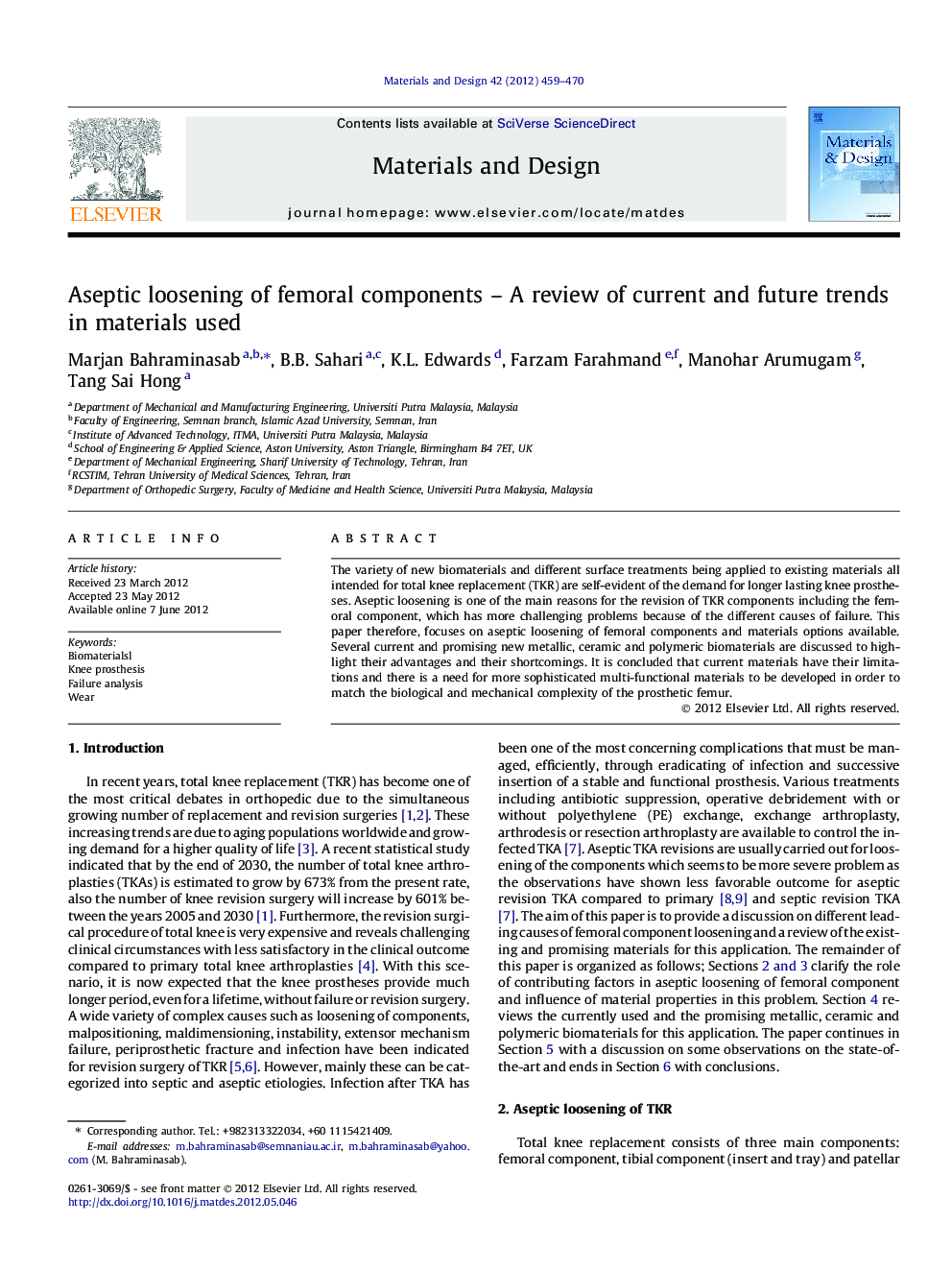| Article ID | Journal | Published Year | Pages | File Type |
|---|---|---|---|---|
| 830504 | Materials & Design (1980-2015) | 2012 | 12 Pages |
The variety of new biomaterials and different surface treatments being applied to existing materials all intended for total knee replacement (TKR) are self-evident of the demand for longer lasting knee prostheses. Aseptic loosening is one of the main reasons for the revision of TKR components including the femoral component, which has more challenging problems because of the different causes of failure. This paper therefore, focuses on aseptic loosening of femoral components and materials options available. Several current and promising new metallic, ceramic and polymeric biomaterials are discussed to highlight their advantages and their shortcomings. It is concluded that current materials have their limitations and there is a need for more sophisticated multi-functional materials to be developed in order to match the biological and mechanical complexity of the prosthetic femur.
► The challenging problem of aseptic loosening in total knee replacement is discussed. ► Current and future metals ceramics and polymers for femoral component are reviewed. ► A need is indicated for developing new biomaterials to reduce aseptic loosening.
